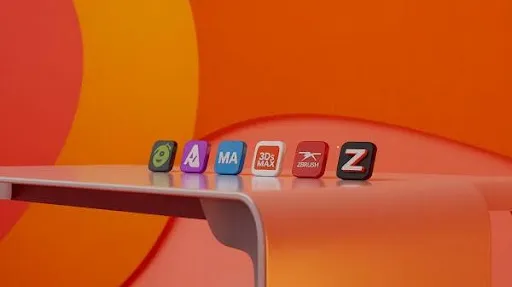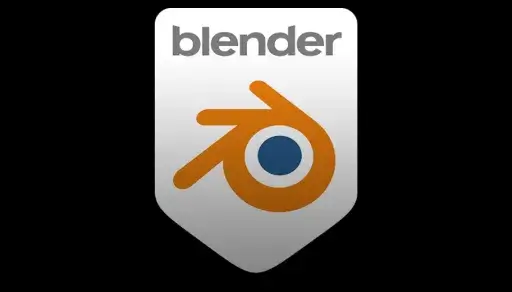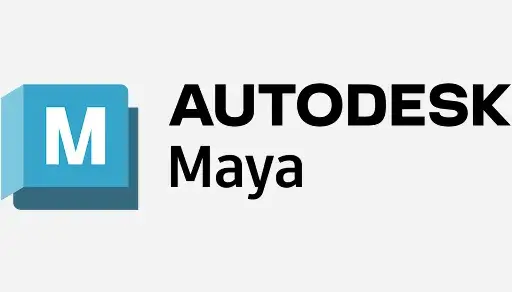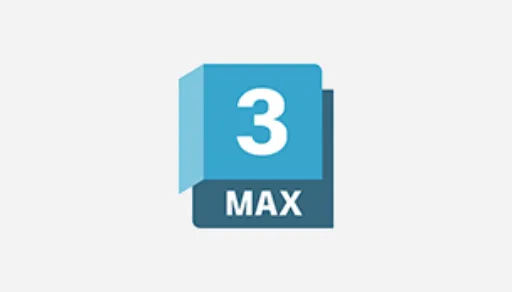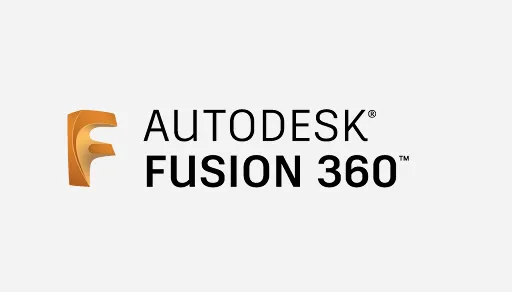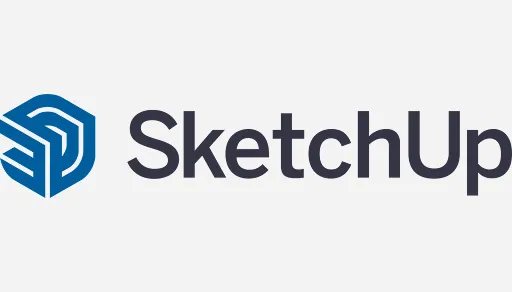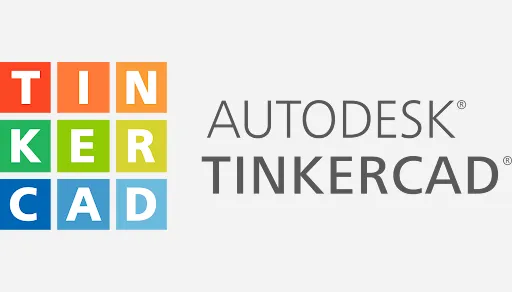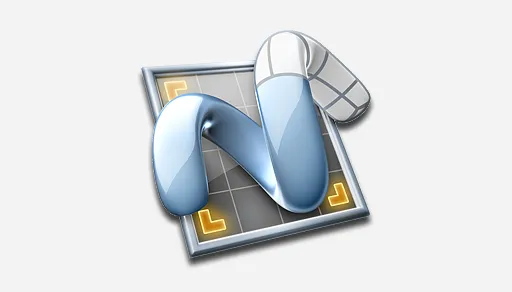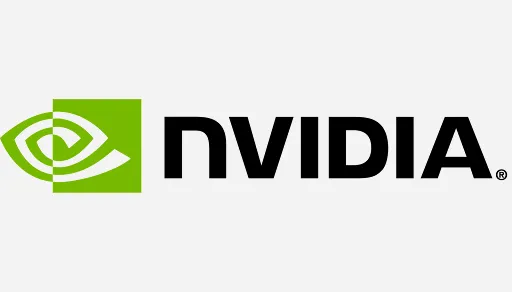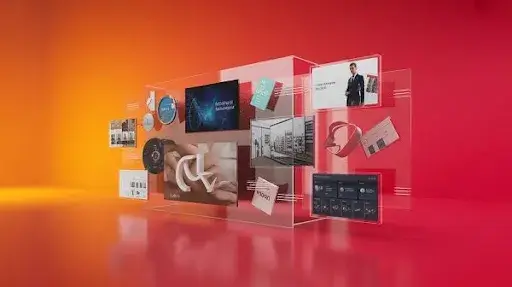Some tools don’t just get the job done — they define how the job gets done. That is exactly what the best 3D modeling software does in 2025. The right tool can enhance workflows, unlock creativity, and scale operations.
The right modeling tool is important in many fields, from game development to industrial prototyping, as it goes beyond just drawing polygons.
Creative studios depend on 3D modeling software that is fast, flexible, industry-grade, and most importantly, adapts to the user’s workflows. As industries progress and the lines blur between simulation and reality, there’s no room for bloated software or reliance on legacy software.
In 2024, the 3D modeling software industry was valued at over USD 33 billion. Furthermore, it is projected to reach a market value above USD 65 billion by 2033. This indicates that 3D modeling is not only here to stay but to thrive.
This blog features the top 3D modeling tools in 2025 alongside animation, product design, VFX, and architectural visualization. For both first-time and seasoned users, this guide covers features, limitations, and exclusives without the fluff, so you can easily pick the best modeling app for your needs.
-
Blender
Blender remains strong in 2025 as a household name for 3D modeling. More than its price point (which is free), it stands out because it offers studio-grade modeling, sculpting, animation, and rendering tools integrated into one lightweight package.
Blender is competitive with premium software on the market because of the constant community-driven improvements, thanks to its open-source nature. If you are looking for software that can efficiently create game assets or complete animated films, you should seriously consider Blender.
Why Professionals and Hobbyists Still Love Blender
- Powerful polygonal modeling and sculpting tools
- Fully integrated Eevee and Cycles render engines
- Advanced geometry nodes for procedural workflows
- Vast plugin ecosystem and community support
You can model, rig, animate, simulate physics, and even edit videos — all inside one platform. For artists on a tight budget or studios experimenting with different pipelines, Blender continues to be the most flexible all-in-one package out there.
Limitations to Know
With its features, Blender can be beneficial, but its interface can be extremely clunky to new users. For users migrating from more structured CAD-based software, the learning curve Blender offers is a steep one.
Though complementing features across the board, quite many users still rely on Blender for its lack of non-linear animation editing and high-end texturing when compared to suites like Maya and Substance.
Still, as a premier 3D modeling software that’s free and open-source, it’s hard to ignore.
-
Autodesk Maya
If you have watched a Pixar movie, an AAA video game, or any VFX-heavy Netflix series, it is highly likely that Maya was used in some form or another. Maya is known globally as the industry-standard 3D software in animation and VFX and continues to be the go-to choice for studios around the world.
Maya is not only popular for 3D modeling but also an animation powerhouse. Maya is well-equipped with character rigging, key frame animation, visual scripting, cloth simulation, and a plethora of other tools meant for breathing life into 3D models.
What Makes Maya Stand Out
- Unmatched rigging and animation workflows
- Advanced deformation tools for facial animation
- Custom scripting using MEL and Python
- Seamless pipeline integration with other Autodesk tools
If you are looking for 3D modeling software for animation that requires heavy rigs, complex timelines, and a collaborative pipeline, at a professional level, Maya offers incredible depth and flexibility.
Maya’s Downsides
Let’s be real — Maya isn’t cheap. The licensing cost is steep, which keeps smaller creators away. Maya remains a key player in the industry in 2025. This is due in part to the robust hardware and advanced features it offers. However, the modeling features, while highly capable, tend to be overshadowed by the animation tools.
For animation-heavy workflows, finding the right 3D modeling software usually starts — and ends — with Maya.
-
Autodesk 3ds Max
If character animation is a chef’s best dish, then environment modeling, archviz, and hard-surface modeling are definitely 3ds Max’s territory. From Video Game design to visual graphics, architectural firms and even game developing companies all need it for clean, detail-rich 3D scenes.
3ds Max is, and has been, at an elite rank for modeling and rendering of static scenes as of 2025. These scenes require not only architectural precision but also need to be photorealistically detailed.
Standout Features in 3ds Max
- Modifier stack workflow for non-destructive editing
- Support for 3rd-party render engines like V-Ray and Arnold
- Excellent UVW mapping tools for texturing
- Spline-based modeling tools for architects and engineers
In 3ds Max, its interface is neat and can be configured to have keyboard shortcuts, which are handy for modellers who seek speedy and accurate results.
When 3ds Max Might Not Be Ideal
It’s not built for complex character animation or fluid simulation. If you’re doing motion-heavy work, Maya is a better fit. And like Maya, 3ds Max comes at a premium price, which may be overkill for freelancers or solo artists.
However, if your studio specializes in archviz, automotive modeling, or game-ready virtual reality environments, 3ds Max is one of the best robust 3D software programs out there.
-
ZBrush
ZBrush isn’t your typical modeling software. It’s more like digital clay for 3D artists who thrive on organic, high-resolution details. From creatures and characters to collectibles and concept art, ZBrush dominates the digital sculpting space — and it keeps getting better.
In 2025, ZBrush’s dynamic tessellation, custom brushes, and high-poly workflow allow for insane detail — the kind needed in film, gaming, and even medical visualization.
What Sets ZBrush Apart
- Millions of polygons without choking your machine
- DynaMesh and ZRemesher for fast topology control
- Custom brush engines that mimic real sculpting tools
- Live Boolean system for hard-surface detailing
ZBrush skips traditional box modeling and dives straight into sculpting, which is why concept artists swear by it.
Why ZBrush Isn’t for Everyone
It’s not beginner-friendly. The interface can be intimidating, and there’s a learning curve — even for experienced artists. Also, for tasks like animation or environment modeling, it’s limited. You’ll often need to retopologize and export to another platform.
But if your focus is character modeling, game design, or film-level detail, ZBrush remains the most powerful 3D modeling design software for sculpting available today.
-
Fusion 360
Fusion 360 has carved a niche in mechanical design, product development, and 3D printing. It’s not built for animation or art — it’s built for precision. Engineers and product designers prefer Fusion 360 for its cloud-enabled collaboration and its parametric modeling, collaboration, and manufacturing toolsets.
In terms of industry demand, it is one of the few software tools that integrates CAD, CAM, and CAE all in one platform, making it exceptionally valuable.
What Makes Fusion 360 Ideal for Engineering
- History-based parametric modeling
- Built-in simulation and stress testing
- Excellent 3D printing and CNC preparation features
- Cloud storage and real-time team collaboration
If you’re looking for Fusion 360 3D modeling software that can go from idea to prototype with built-in manufacturing capabilities, this is the tool to beat.
Where It Falls Short
Fusion 360 isn’t suited for games, film, or entertainment content. It lacks rigging, sculpting, or animation tools. But for precise modeling, metalwork, or electronics casing design, it’s among the top 3D modeling tools you can use today.
-
SketchUp (SketchUp Pro)
SketchUp Pro is still favored even in 2025. Interior designers and spatial planners are still using it because of its simple interface and shallow learning curve, allowing the drafting of layouts without the need to memorize tools found in more complex, industry-centric software.
The “Push/Pull” modeling method lets you turn flat surfaces into 3D shapes in seconds. The real-time 3D modeling and rendering offer designers a powerful way to incorporate the 3D Warehouse, a rich collection of numerous pieces of furniture, structural models, and other fixtures, greatly enhancing the capability to visualize spaces and boosting precision.
Being compatible with AutoCAD, Revit, and rendering plugins like V-Ray makes it an excellent addition to any professional workflow.
Why designers rely on SketchUp Pro:
- Less technical complexity makes it ideal for visual communication and early-stage concepts.
- Web-based and desktop options support lightweight workflows.
- Integrates easily with other architectural tools.
Limitations to consider: It’s not built for complex sculpting or animation, and rendering quality depends on add-ons. If you’re tasked with high-detail modeling or character work, SketchUp falls short. But for generating fast, clean floor plans or room layouts, it’s a reliable and beginner-friendly choice.
-
Houdini
Although Houdini is not the first program that comes to mind when you think of user-friendly software, it does stand out in the areas of procedural generation, particle effects, and simulation-based modeling. Houdini 2025 has more user-friendly workflows with node systems and offers better integration with real-time engines.
You’ll find it heavily used in film and game studios that need large-scale procedural systems, such as terrain generation, destruction, crowd simulations, or motion graphics.
Houdini stands out with:
- Procedural geometry tools that generate complex models quickly.
- Native support for effects like fluids, fire, crowds, physics, and more.
- Native USD support, making it a superb match with tools like Omniverse and Unreal.
The main hurdles are learning the Node.js system and building procedural logic. But for VFX-heavy studios or anyone needing predictable, repeatable 3D models, Houdini is an undeniably powerful 3D modeling software solution.
-
Tinkercad
Tinkercad keeps winning hearts in education and hobbyist circles. It’s web-based, simple, and perfect for designers who are discovering 3D modeling for the first time. Drag-and-drop blocks let you learn fundamental geometry and basic workflows, without even worrying about UI complexity.
This is particularly beneficial when students or hobbyists are working on 3D printed models or first drafts. The process is simple: design in-browser, export in STL format, print, and refine later with more advanced software.
Tinkercad highlights:
- Intuitive block-based building.
- No installation or hardware strain.
- Great stepping stone for learning more advanced 3D modeling software.
Tinkercad is not ideal when it comes to sculpting or high-detail modeling, but if you are looking to teach the fundamentals of modeling or need to design something in a hurry, Tinkercad is great.
-
Rhino 7
With its unparalleled capabilities in technical modeling and surface design, Rhino 7 is an industry favorite. It is extensively utilized in architecture, industrial design, jewelry design, and automotive modeling, making it a perfect blend of artistic and engineering genius.
Rhino’s proficiency with organic surfaces, curves, and NURBS modeling is exceptional. Its recent SubD tool addition now allows for smooth freeform and precise construction workflows.
What makes Rhino 7 valuable:
- Excellent NURBS and SubD surface modeling.
- Robust interoperability with CAD formats and plugins.
- Lightweight UI with fewer crashes and a faster learning curve.
For professionals focused on detail, it provides the adaptability and freedom for flawless creativity. Though it does not offer native rigging or animation capabilities, it integrates with renderers like V-Ray and Equinox.
-
Modo
Though Modo isn’t as well recognized, it is invaluable for maintaining speed and control during design workflows. Among concept artists and product designers, it is popular as well as with studios focused on rapid prototyping and creative visualization.
Best known for offering precise modeling coupled with powerful sculpting and intuitive vertex manipulation, Modo excels with its responsive renderers and elegantly designed interfaces. The focus is on modeling and design visualization as primary strengths, with minimal distractions.
Modo delivers:
- Mesh modeling with subdivision and direct workflow.
- A great renderer built in, ideal for look dev and previews.
- Tight workflow for sculpting, painting, and final rendering.
While lacking the animation focus of Maya or Blender, Modo’s strength in visual design and rapid concept creation keeps it in the top ranking for 3D modeling tools.
-
NVIDIA Omniverse
Omniverse isn’t a traditional modeling app. This is built on Pixar’s USD (Universal Scene Description) design, intended for collaborative teams working in real-time on joint projects. In 2025, it’s expected to gain popularity in studios that require simultaneous interaction among designers, engineers, and artists on the same project.
It integrates proprietary software like Maya, 3ds Max, Unreal Engine, and more into a single dynamic ecosystem. Teams can see modifications in real-time, hold discussions, and co-edit within the same scene.
What makes Omniverse unique:
- Real-time multi-user editing and commenting.
- Supports AI tools like noise reduction and generative modeling.
- Integrates smoothly with Autodesk tools and creative pipelines.
To some degree, studios requiring a specific NVIDIA GPU would face some constraints. Other NVIDIA infrastructures seem costly. Those are most appropriate for enterprises or studios dealing with real-time simulations or visual effects related to construction architecture.
-
Adobe Dimension & Adobe Substance 3D Sampler
Remarkably, two tools are offered by Adobe that are worth mentioning: mockups are created using Adobe Dimension, and texture generation is created using Adobe Substance 3D Sampler.
With a broad range of uses, Adobe Dimension comes in particularly handy for marketers and graphic designers who are after polished, sleek renderings and strive for a simple interface. With built-in lighting scenarios and materials, you can place a 3D model, apply a texture, and get a ready-to-publish product visual—simple and efficient.
Adobe Substance 3D Sampler fills the need for AI-powered material creation. You take a photo, upload it, and Substance generates tileable PBR textures—maps for color, roughness, metalness, and more. It’s fast, smart, and helps creators avoid long manual texturing sessions.
Pros & Cons:
- Dimension lacks modeling tools—best when you already have assets to render.
- Substance 3D Sampler can strain hardware on large scenes.
- Both excel at visual output but need to be paired with broader modeling platforms.
With tools like these, you can truly complement yourself with a perfect and simple software that would require no additional software. Tools that would provide stunning and realistic textures in no time.
Frequently Asked Questions
If the content is likely to be featured in voice search, answering commonly asked questions should be done distinctly and published without delay.
Can you do 3D modeling for free?
Yes. Blender, Tinkercad, and SketchUp Free are fully accessible with zero cost. Blender offers full features; Tinkercad is great novice-level software; SketchUp Free is browser-based for simpler projects.
What is the easiest 3D modeling software to learn?
Tinkercad and SketchUp Free are the simplest. SketchUp’s clean interface and drag-and-drop tools make it ideal for beginners. Blender is free and powerful, but has a steeper learning curve.
How long does it take to learn modeling software?
Basic skills in tools like Blender or SketchUp can be learned in a few weeks with consistent practice. Mastering animation, sculpting, or CAD workflows can take several months or longer.
Are these tools cross-platform?
Most major platforms run on Windows and macOS. Blender, Maya, Rhino, and Fusion 360 support Linux as well. Cloud-based tools like Fusion or Tinkercad run in browsers, so they’re platform-agnostic.
How do I choose the right 3D modeling software?
Consider your goals (animation vs product design), your machine specs, your budget, and your team's needs. For sculpting and animation, Blender or Maya is best. For engineering, choose Fusion 360 or Rhino. For interface simplicity, choose SketchUp or Tinkercad.
Final Words
Every creative or engineering journey deserves the right tool. If you’re building characters or stories, Maya and ZBrush let you sculpt narratives in 3D. For product development or machinery, Fusion 360 and Rhino offer precision and simulation. For sneak previews or mockups, Dimension and Sampler polish the visuals.
Prolific Studio, one of the best animation studios in San Francisco, offers training packages and implementation support across all these platforms. If you’re not sure which software to adopt, we can help assess your workflow and guide your team to the best fit.
Want custom templates, asset pipelines, or training plans tailored to your industry? Let’s make your creative team unstoppable.
Reach out today to see which 3D modeling software solution fits your production pipeline — scale up smarter, design faster, and create without limits.
Related Articles:

